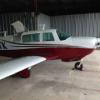Scrap Value
-
Members Online
- cbarry
- DC_Brasil
- tony
- buddy
- Van Lanier
- onegreen
- Pasturepilot
- TCC
- breenalan
- Marc_B
- 1980Mooney
- Jetdriver
- Denis Mexted
- Jim F
- DCarlton
- Old Chub
- warrenehc
- EricJ
- Austintatious
- M20E for me
- SKI
- Rick Junkin
- Ragsf15e
- Dtips
- 201er
- Schllc
- larryb
- rturbett
- tcal780
- Skyland
- Patrick Horan
- stang2nv95
- toto
- AndreiC
- NickG
- Paul Thomas


Recommended Posts
Join the conversation
You can post now and register later. If you have an account, sign in now to post with your account.